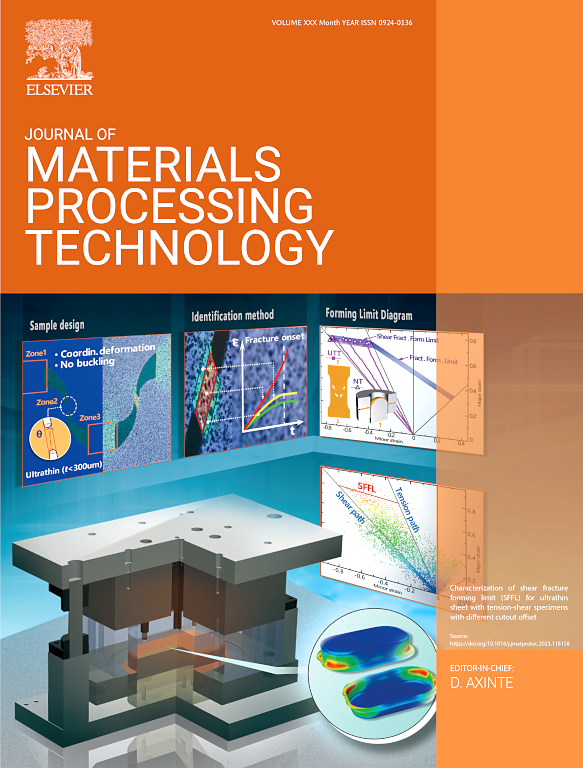Towards understanding the surface friction in rotational-vibration assisted incremental sheet forming
IF 6.7
2区 材料科学
Q1 ENGINEERING, INDUSTRIAL
Journal of Materials Processing Technology
Pub Date : 2025-02-01
DOI:10.1016/j.jmatprotec.2024.118692
引用次数: 0
Abstract
Incremental sheet forming (ISF), as a flexible sheet metal forming method, has attracted wide-spreading attention, however the dissatisfied surface quality has limited its adoption for potential industrial applications. There are insufficient studies in assessing the friction condition in ISF and it also lacks accurate methods for determining the coefficient of friction (CoF). Further investigations are required to understand fundamental mechanisms of the effect of friction condition on surface quality in ISF. In this study, it is found that the surface quality of sheet metal parts is considerably improved by rotational-vibration assisted ISF (RV-ISF) process under high-amplitude vibration. The improvement is considered to be attained by several underpinning mechanisms: the friction reduction under vibration, improvement of lubrication condition and increased surface micro-hardness. To investigate these mechanisms, two methods are proposed to evaluate the friction condition at the contact interface between the tool and sheet in ISF. The first method is a new calibration model for an accurate calculation of the CoF in ISF by excluding the effect of the horizontal forming force of the ISF tool. The second method is a novel analytical model in predicting the reduction of CoF under vibration in the RV-ISF. The friction prediction model is validated through experimental results when employing various rotational-vibration tools in processing three different materials. The results show that the forming procedure of “down-milling” is better than “up-milling” for improving the surface quality in RV-ISF. The vibration amplitude has the greatest effect on friction reduction, while other variables including non-vibrating frictional force, contact rigidity coefficient and tool radius also show significant effects on friction reduction. This study presents a significant advancement of friction research in ISF by developing two new friction models, offering new insights and effective methods to improve surface quality and accurately calculate the CoF under vibration effect.
求助全文
约1分钟内获得全文
求助全文
来源期刊

Journal of Materials Processing Technology
工程技术-材料科学:综合
CiteScore
12.60
自引率
4.80%
发文量
403
审稿时长
29 days
期刊介绍:
The Journal of Materials Processing Technology covers the processing techniques used in manufacturing components from metals and other materials. The journal aims to publish full research papers of original, significant and rigorous work and so to contribute to increased production efficiency and improved component performance.
Areas of interest to the journal include:
• Casting, forming and machining
• Additive processing and joining technologies
• The evolution of material properties under the specific conditions met in manufacturing processes
• Surface engineering when it relates specifically to a manufacturing process
• Design and behavior of equipment and tools.
 求助内容:
求助内容: 应助结果提醒方式:
应助结果提醒方式:


